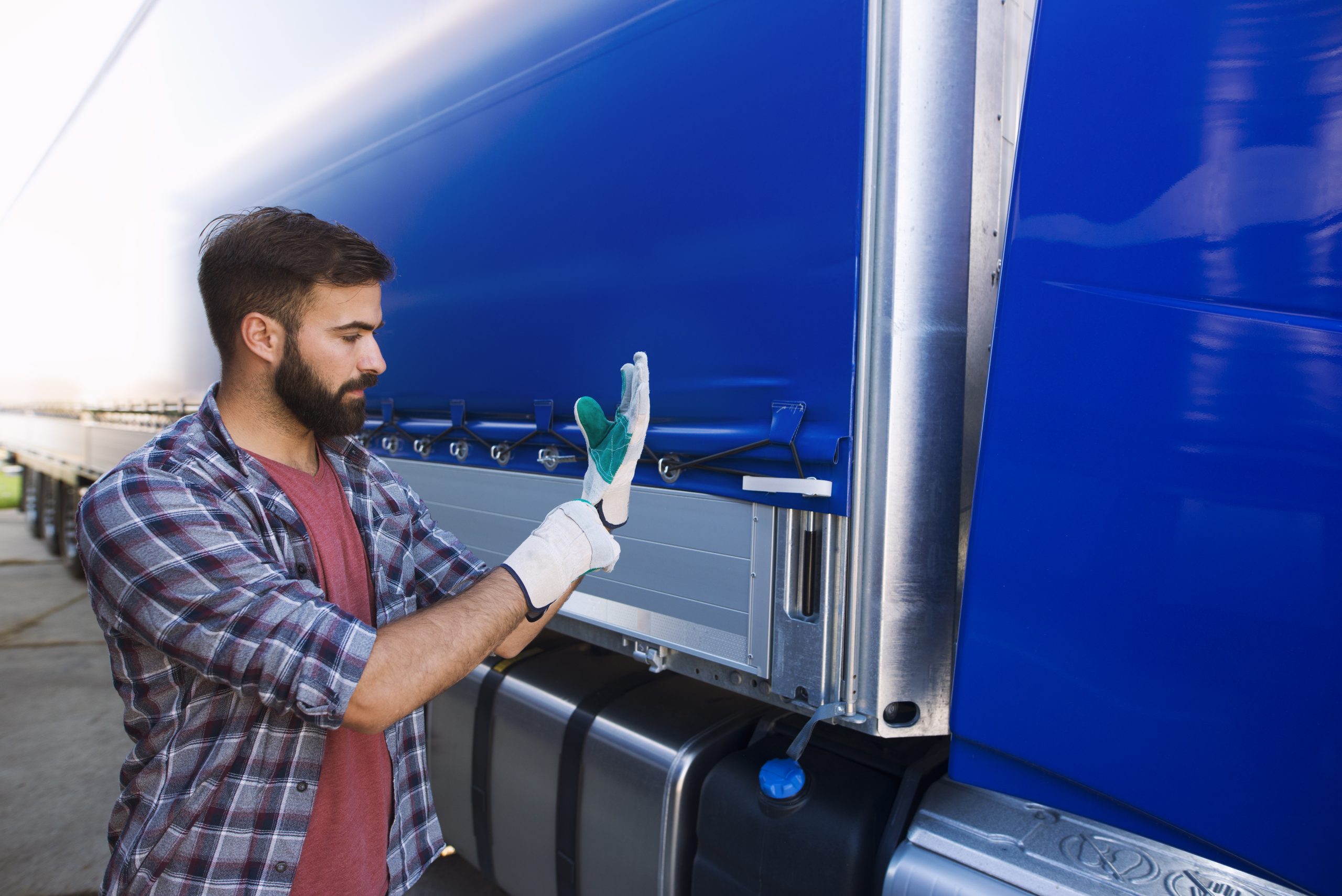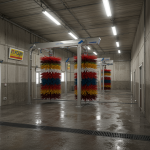Revving up the engine, feeling the power of a big rig in motion. The trucking industry is an essential force that keeps goods moving across countries and continents. And with every long haul comes the need for maintenance and care. That’s where truck washes come into play – ensuring these mighty machines stay clean and road-ready.
But before embarking on the journey of establishing a successful truck wash, it’s crucial to conduct a thorough feasibility study. This comprehensive analysis will be your compass, guiding you towards making informed decisions about location selection, market demand, operational considerations, financial projections, and more.
In this blog post, we’ll explore the key components of a truck wash feasibility study. From analyzing industry trends to evaluating potential risks and developing marketing strategies – we’ve got you covered! So fasten your seatbelt as we dive headfirst into this exciting road trip towards building your very own thriving truck wash business!
Background
1. Overview of the truck wash industry
2. Purpose of the feasibility study
Overview of the truck wash industry:
The truck wash industry plays a vital role in maintaining the cleanliness and functionality of commercial trucks. These specialized facilities provide a range of services, including exterior washing, undercarriage cleaning, and even interior detailing. With an ever-growing number of trucks hitting the roads every day, the demand for professional truck washing services is on the rise.
Purpose of the feasibility study:
Before embarking on any business venture, conducting a feasibility study is essential. For aspiring entrepreneurs looking to enter into the truck wash industry, this study serves as a roadmap to success. It provides valuable insights into market dynamics, potential challenges, and opportunities for growth.
By analyzing various factors such as market size and trends, customer preferences, competition analysis and regulatory requirements – a feasibility study helps determine whether starting a truck wash business is viable or not. It allows you to make informed decisions about location selection, equipment investment and operational strategies that are crucial for long-term success.

Market Analysis
A. Industry Overview
1. Size and growth trends of the truck wash industry
2. Key players and competitors
The truck wash industry is experiencing significant growth and expansion, driven by the increasing demand for clean and well-maintained trucks. Trucks are essential in transporting goods across the country, and maintaining their appearance not only enhances their brand image but also ensures optimal performance.
In recent years, the size of the truck wash industry has seen a steady rise due to this growing need. As businesses recognize the importance of keeping their fleets clean, more truck wash facilities have emerged to meet this demand. This trend is expected to continue as transportation companies prioritize regular washing and maintenance.
Key players in the truck wash industry include established chains such as Blue Beacon Truck Washes and Petro Stopping Centers. These companies have built a strong reputation for providing high-quality services and attracting a large customer base. However, there is still plenty of room for new entrants in certain regions where competition may be less intense.
To succeed in this competitive landscape, it’s crucial for any new truck wash venture to differentiate itself from existing players through unique offerings or specialized services. Additionally, staying updated with changing market trends and incorporating innovative technologies can help attract customers seeking convenient solutions.
Understanding the current size and growth trends within the truck wash industry provides valuable insights when conducting a feasibility study. By analyzing market dynamics and studying key competitors’ strategies, entrepreneurs can develop effective business plans that capitalize on market opportunities while addressing potential challenges head-on.
Demand Analysis
1. Assess the demand for truck washing services in the proposed location
2. Consider seasonal variations and industry trends
When conducting a truck wash feasibility study, one of the crucial components is analyzing the demand for truck washing services in the proposed location. Understanding the level of demand will help determine if establishing a truck wash in that area is viable.
To assess the demand, factors like population density, industrial activity, and proximity to major highways should be considered. A high concentration of trucks passing through or operating in the area indicates potential demand for truck washing services. Additionally, evaluating industry trends can provide insights into whether there is a growing need for such services.
Seasonal variations also play a role in assessing demand. Some regions experience higher levels of road salt and dirt during winter months, increasing the need for regular cleaning. Similarly, industries with peak seasons may require more frequent washes during busy periods.
By thoroughly examining both local circumstances and broader market trends, you can gauge the potential demand for your truck wash business accurately. This analysis enables you to make informed decisions about site selection and operational strategies moving forward
Location Analysis
A. Site Selection
1. Evaluate potential locations for the truck wash
2. Consider accessibility, visibility, and proximity to major transportation ro
When it comes to building a successful truck wash, location is key. The site selection process plays a crucial role in determining the viability and profitability of your business. So, how do you go about evaluating potential locations for your truck wash?
Consider accessibility. You want your truck wash to be easily accessible for both local drivers and those passing through the area. Look for locations that are close to major highways or transportation routes, ensuring convenient access for trucks of all sizes.
Visibility is another important factor to consider. A highly visible location will attract more customers and increase awareness of your truck wash among potential clients. Look for sites with good visibility from main roads or high traffic areas.
Proximity to major transportation hubs is also worth considering. Being located near distribution centers or logistics hubs can bring in a steady stream of business from trucking companies needing regular washing services.
In addition to these factors, it’s essential to research local zoning regulations and environmental requirements before finalizing any site selection decisions. Ensure that the chosen location complies with all necessary permits and approvals needed for operating a truck wash facility.
By thoroughly evaluating potential locations based on accessibility, visibility, and proximity to major transportation routes, you can make an informed decision that sets your truck wash up for success right from the start!
Regulatory Considerations
1. Research local zoning and environmental regulations
2. Ensure compliance with permits and approval
When it comes to starting a truck wash, there are several regulatory considerations that need to be taken into account. One of the first steps is researching local zoning and environmental regulations. This involves understanding the specific rules and requirements set forth by the local government regarding where a truck wash can be located and what types of activities are allowed.
Zoning regulations dictate which areas are designated for commercial or industrial use, and they may have restrictions on noise levels, operating hours, or even the size of the facility. It’s important to thoroughly research these regulations to ensure that your proposed location aligns with the zoning requirements.
Additionally, environmental regulations must also be considered. Truck washing involves using water and cleaning chemicals, which can potentially have an impact on the environment if not properly managed. Ensuring compliance with permits and approvals from environmental agencies is crucial in order to prevent any negative effects on surrounding ecosystems or water sources.
By conducting thorough research and ensuring compliance with both zoning and environmental regulations, you can navigate through potential legal challenges smoothly while establishing your truck wash business successfully.
Technical and Operational Considerations
A. Equipment and Technology
1. Identify the necessary equipment for a truck wash
2. Evaluate the latest technologies and innovations
When it comes to the technical and operational considerations for a truck wash, one of the key aspects to focus on is the equipment and technology required. Identifying the necessary equipment is crucial for ensuring that your truck wash can operate efficiently and effectively.
In order to provide high-quality services, you will need a range of equipment such as pressure washers, brushes, water reclamation systems, drying systems, and waste management solutions. Each piece of equipment plays a vital role in delivering a thorough and professional cleaning experience for trucks.
However, it’s not just about having the basic equipment; staying up-to-date with the latest technologies and innovations in the industry is equally important. Technology advancements have led to automated systems that streamline operations and improve productivity. For instance, touchless washing systems minimize physical contact with vehicles while still delivering exceptional results.
By evaluating these latest technologies and innovations available in the market, you can determine which ones align best with your goals and budget. Investing in state-of-the-art technology can greatly enhance your truck wash’s efficiency while also attracting more customers who appreciate modern conveniences.
Remember that choosing reliable suppliers who offer quality products is essential when considering the necessary equipment for your truck wash. Taking into account factors like durability, maintenance requirements, energy efficiency, and customer reviews will help ensure that you make informed decisions regarding your equipment purchases.
Technical considerations play a significant role in determining how well-equipped your truck wash will be to meet customer demands efficiently. By identifying necessary tools & assessing cutting-edge technological options currently available within this sector – operators can maximize their business potential by providing superior services backed by advanced machinery capable of performing optimally even under demanding conditions!
Operational Workflow
1. Define the step-by-step process for washing trucks
2. Estimate time requirements for each truck wash
Operational Workflow is a crucial aspect of any successful truck wash. It involves defining the step-by-step process for washing trucks and estimating the time requirements for each truck wash. Let’s dive into these key components in more detail.
The first step in the operational workflow is to assess the condition of the incoming trucks. This includes inspecting for any visible dirt, debris, or stains that might require special attention during the cleaning process. Once this initial assessment is done, it’s time to move on to pre-washing.
During pre-washing, high-pressure water jets are used to remove loose dirt and grime from the exterior surfaces of the trucks. This helps prepare them for the next stage: applying detergent or soap. The detergent is carefully selected based on its effectiveness in removing stubborn stains while being safe for use on different types of truck surfaces.
After applying detergent, it’s important to let it sit for a few minutes so that it can penetrate and loosen up any remaining dirt or grease. Next comes scrubbing! Soft brushes or cloth pads are used to agitate and remove tough stains manually.
Once all areas have been thoroughly scrubbed, it’s time for rinsing. High-pressure water jets are again employed to rinse off all traces of soap and loosened dirt from every nook and cranny of the truck’s exterior surface.
After rinsing, a final inspection is carried out to ensure that all parts have been properly cleaned before drying begins. Depending on weather conditions and available equipment, either air dryers or hand towels may be used to dry off excess water from both large flat surfaces as well as hard-to-reach areas like mirrors or wheels.
Estimating time requirements for each truck wash depends on various factors such as size/type of vehicle being washed (e.g., tractor-trailers vs smaller delivery vans), level of cleanliness required by customers (basic vs deep clean), number of staff members working simultaneously at the wash bay, and efficiency of equipment being used.

Financial Projections
A. Cost Estimation
1. Breakdown of startup costs (land, construction, equipment)
2. Operating costs (water, electricity, cleaning supplies, labor)
Financial Projections are a crucial aspect of any feasibility study, as they provide insights into the potential costs and revenues associated with starting a truck wash business. In order to accurately estimate the financials, it is important to consider both the startup costs and ongoing operating expenses.
Startup costs for a truck wash typically include expenses such as acquiring land, constructing the facility, and purchasing necessary equipment. These initial investments can vary depending on factors like location and size of the facility. A thorough breakdown of these costs will help determine the overall budget required to get your truck wash up and running.
Operating costs encompass various ongoing expenses that need to be considered when projecting potential profitability. This includes items such as water usage, electricity consumption, cleaning supplies, and labor wages. It’s essential to conduct detailed research and analysis in order to estimate these recurring expenses accurately.
By carefully analyzing these cost components, you can develop a comprehensive understanding of the financial implications associated with establishing a successful truck wash business. This information will be invaluable when creating accurate revenue projections based on expected customer volume.
Remember that every detail matters when evaluating financial viability – from estimating construction materials’ prices to determining labor wages based on industry standards or local regulations. Thoroughly researching each cost component is essential for developing realistic financial projections.
Revenue Projections
1. Estimate pricing for different services
2. Project revenue based on expected customer volume
When conducting a feasibility study for a truck wash, one crucial aspect to consider is revenue projections. This involves estimating the pricing for different services offered and projecting the potential revenue based on expected customer volume.
To determine pricing, it is essential to conduct thorough market research and analyze competitors’ pricing strategies. Consider factors such as the level of service provided, location, quality of equipment, and any additional offerings like detailing or maintenance services. By evaluating these elements and setting competitive prices that align with industry standards, you can attract customers while ensuring profitability.
Once pricing is established, projecting revenue requires careful analysis of the target market’s size and demand for truck washing services in your proposed location. Consider factors like local fleet sizes, frequency of usage by trucking companies passing through the area, and any seasonal variations that may affect demand.
By combining data from market research with anticipated customer volume based on these factors, you can create realistic revenue projections. It’s important to be conservative in your estimates and account for potential fluctuations in demand over time.
Remember that accurate revenue projections are essential when seeking financing or investors for your truck wash venture. So take the time to thoroughly analyze all relevant data before finalizing your financial forecasts.
Process of estimating pricing for different services and projecting revenue based on expected customer volume is an integral part of a comprehensive feasibility study for a truck wash business. By carefully considering market trends, demand patterns, and competitor analysis, you can develop accurate financial forecasts that will help guide decision-making moving forward.

Risk Analysis
A. Identify Potential Risks
1. Market competition
2. Regulatory challenges
3. Economic downturns
B. Mitigation Strategies
1. Develop plans to address identified risks
2. Establish contingency measures
Risk Analysis
Identifying potential risks is a crucial step in conducting a truck wash feasibility study. Three key areas to consider are market competition, regulatory challenges, and economic downturns.
1. Market Competition: The truck wash industry can be highly competitive, with numerous players vying for customers’ attention. It’s essential to assess the level of competition in the proposed location and understand how it may impact your business. Analyze existing truck wash facilities nearby and evaluate their services, pricing, and customer base.
2. Regulatory Challenges: Compliance with local regulations is vital for any business operation, including truck washing services. Research zoning laws, environmental regulations, permits required for water usage or waste disposal, and any other legal considerations that may affect your operations. Develop plans to ensure compliance from day one to avoid costly penalties or shutdowns down the line.
3. Economic Downturns: Like any other industry, the truck wash sector can be impacted by economic fluctuations. During times of recession or financial instability, businesses might experience decreased demand as companies cut back on non-essential expenses like vehicle maintenance services. Consider creating contingency measures such as diversifying service offerings or targeting different customer segments to mitigate potential losses during economic downturns.
Mitigation Strategies:
To address these identified risks effectively:
1. Develop plans tailored specifically to each risk factor highlighted above:
– For market competition concerns, focus on unique selling propositions (USPs) that set your truck wash apart from competitors.
– Regarding regulatory challenges,
maintain open lines of communication with relevant authorities
engage legal counsel if necessary.
– In response to economic downturns,
create flexible pricing structures
explore partnerships with complementary businesses (e.g., fleet management companies).
2. Establish contingency measures:
– Keep a close eye on market trends
develop agile marketing strategies
– Monitor changes in legislation/policies
stay informed about upcoming regulations/requirements affecting the truck wash industry.
– Maintain financial reserves to withstand potential economic downturns or
Marketing and Sales Strategy
A. Branding and Positioning
1. Develop a brand identity for the truck wash
2. Define its positioning in the market
B. Marketing Channels
1. Identify effective channels to reach the target audience
2. Develop a marketing plan
When it comes to marketing and sales strategy for a truck wash, developing a strong brand identity is crucial. This involves creating a distinct and memorable image that sets your truck wash apart from competitors. Consider factors such as the name, logo, color scheme, and overall visual aesthetic. Your brand should convey professionalism, reliability, and efficiency.
Once you have established your brand identity, the next step is defining its positioning in the market. Determine what makes your truck wash unique and emphasize those strengths in your marketing efforts. Are you known for using eco-friendly cleaning products? Do you offer additional services like detailing or engine maintenance? Highlight these aspects to attract customers who value those specific offerings.
Identifying effective marketing channels is key to reaching your target audience. Consider where your potential customers spend their time and how they prefer to receive information. Online platforms like social media can be highly effective for targeting both individual drivers as well as fleet operators. Traditional advertising methods such as billboards or radio ads may also be useful depending on your location.
In addition to identifying channels, developing a comprehensive marketing plan will ensure consistent messaging across all platforms. Outline specific tactics such as social media campaigns, email newsletters, targeted promotions or partnerships with local businesses that align with your target audience’s preferences.
With an effective branding and positioning strategy along with a well-executed marketing plan in place, you’ll be able to increase awareness of your truck wash among potential customers, resulting in increased footfall at your facility.
And remember, it’s important to regularly evaluate the success of different strategies, and adjust accordingly, to maximize results!
Legal and Compliance Considerations
A. Business Structure
1. Choose an appropriate legal structure (sole proprietorship, LLC, corporation)
2. Address licensing and regulatory compliance requirements
When starting a truck wash business, it is crucial to consider the legal and compliance aspects of your venture. One of the key considerations is choosing an appropriate legal structure for your business. There are different options available such as sole proprietorship, LLC, or corporation. Each has its own advantages and disadvantages in terms of liability protection, tax implications, and ease of operation.
Once you have decided on the legal structure, you must also address licensing and regulatory compliance requirements. This includes obtaining necessary permits and licenses from local authorities to operate a truck wash facility. Depending on your location, there may be specific regulations regarding water usage, waste disposal, environmental impact assessments, and zoning restrictions that need to be met.
Navigating through these legal requirements can be complex but it’s essential for ensuring that your truck wash operates within the bounds of the law. It’s advisable to consult with an attorney or seek professional advice to ensure full compliance with all applicable laws and regulations.
By carefully considering these legal and compliance considerations early on in your planning process, you can avoid potential pitfalls down the road and establish a solid foundation for a successful truck wash business.
Conclusion
A. Summary of Findings
B. Recommendation for the Feasibility of the Truck Wash
After conducting a thorough analysis of the truck wash industry and considering various factors such as market demand, location feasibility, regulatory compliance, operational considerations, financial projections, risk analysis, marketing strategy, and legal requirements; we have arrived at some key findings.
The truck wash industry is experiencing steady growth with an increasing demand for high-quality cleaning services. There are several established players in the market but there is still room for new entrants to carve out their own niche.
In terms of demand analysis, we have evaluated the potential customer volume in the proposed location taking into account seasonal variations and industry trends. Our research indicates that there is a consistent need for truck washing services in this area throughout the year.
During our site selection process, we carefully considered factors such as accessibility to major transportation routes and visibility to ensure maximum exposure to potential customers. The chosen location meets these criteria effectively.
Furthermore, regulatory considerations were thoroughly researched to ensure compliance with local zoning and environmental regulations. All necessary permits and approvals will be obtained before commencing operations.
Technical aspects such as equipment selection were carefully considered keeping in mind efficiency and cost-effectiveness. We also explored innovative technologies that can enhance the overall performance of the truck wash facility.
With regards to financial projections, we estimated both startup costs (land acquisition/construction/equipment) as well as operating costs (water/electricity/cleaning supplies/labor). Additionally revenue projections were made based on expected customer volume and pricing strategies for different service offerings.
Risk analysis revealed potential challenges including market competition from existing players within close proximity. However mitigation strategies were developed to address these risks along with contingency measures should they arise.
Our marketing strategy focuses on developing a strong brand identity and positioning within the market. Effective channels will be utilized to reach our target audience ensuring maximum exposure leading to increased customer traffic generation.
Finally legal compliance has been addressed by choosing an appropriate business structure while adhering diligently to licensing requirements set forth by relevant authorities.




